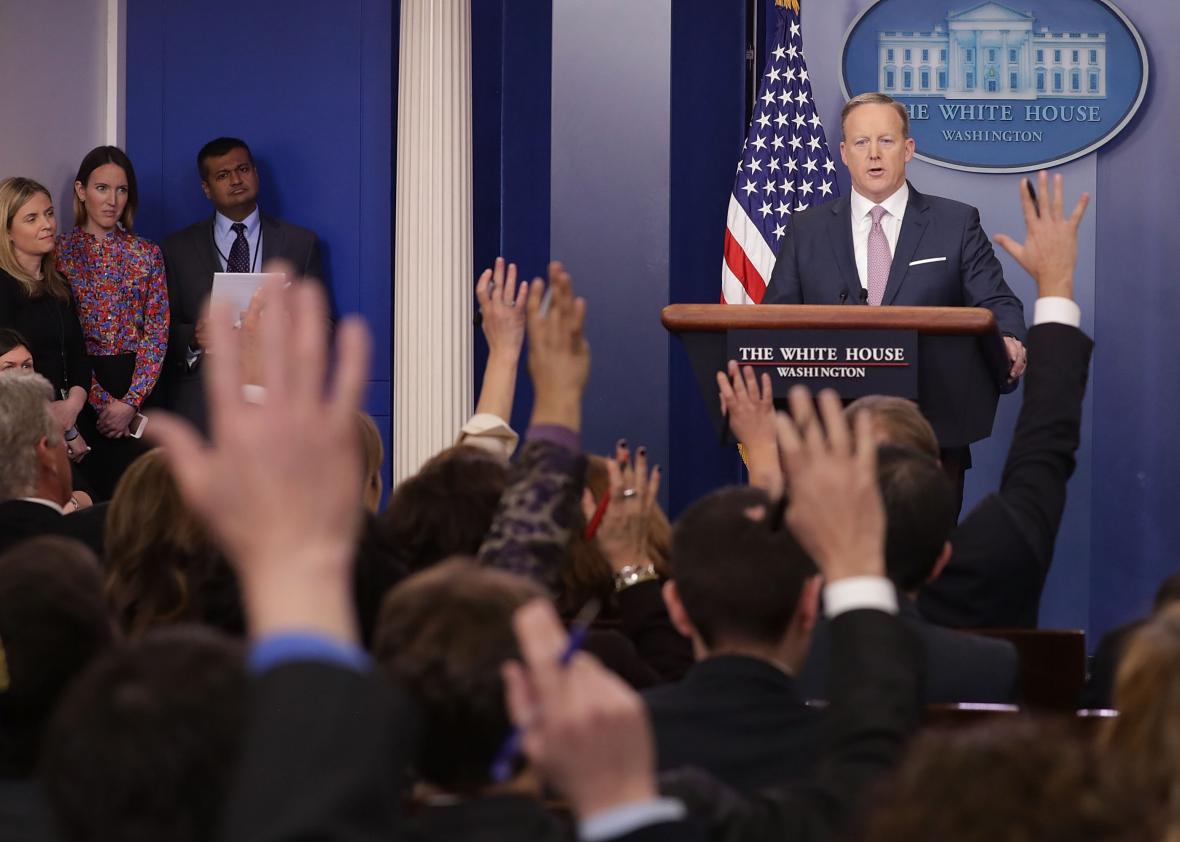Donald Trump’s refusal to accept the official unemployment rate, which currently stands at 4.7 percent, was one of the more depressing, if underappreciated, subplots of the 2016 presidential cycle—an early and telling sign of the conspiracy-addled demagogue’s complete unwillingness to accept facts that don’t comport with his worldview. Rather than acknowledge that joblessness had trended down toward somewhat normal levels during the Obama administration, Trump ranted that the true unemployment rate was probably closer to 42 percent, because some 93 million Americans weren’t working at the time. (This was absurd, since that 93 million included retirees, students, and stay-at-home parents, among others—something he may or may not have been aware of.) His son Donald Jr., meanwhile, claimed the Bureau of Labor Statistics’ data were “massaged to make the existing economy look good.” Even after he won, Trump called the headline unemployment rate a “fiction,” while also incorrectly explaining how it was calculated.
This all raised several troubling questions. Would Trump continue rejecting the unemployment rate as president? If so, what statistics would he rely on to measure the performance of the economy? Would he accept any of the numbers currently compiled by the Department of Labor, or would he look to more, um, heterodox metrics? Would he try to meddle with the government’s data-collection process? Would we be able to trust official economic stats in the Trump years?
On Monday, during Trump Press Secretary Sean Spicer’s first daily briefing with the White House press corps, NPR’s Mara Liasson asked a very reasonable question: What is the unemployment rate? This should have merited a simple response. Instead, what ensued was a nearly three-minute mamba in which Spicer never actually answered the query. Here’s how it started off:
Liasson: Just really simple. What is the average national unemployment rate?
Spicer: What’s the average?
Liasson: What’s the overall unemployment rate?
Spicer: Are you talking about whether or not we include the full …
Liasson: I’m just asking you—
Spicer: I mean the Bureau of Labor Statistics puts it out—
Liasson: Do you accept their—
Spicer: No, no, it’s not a question of what I accept. There are ways you can put out full employment—[cross talk]—right, there’s a reason we put out several versions of that. One is the illustrative nature of how you count the unemployed, whether or not they’re long-term unemployed or whether or not they’re still seeking a job. But there’s a reason that you put out several of these statistics, so that economists can view them and decide—look at different landscapes on, on how to make economic policy.
Liasson: During the campaign at one point—Trump at one point said it was 42 percent. I just want to get clear on where we’re starting from.
Spicer: But again, part of it is his economic team is going to look at a multitude of economic statistics and drive economic policies.
Here’s the clip:
This first part of Spicer’s response is sort of reasonable if you ignore the fact that we witnessed a grown man dodge a simple question anybody with Google can answer. Yes, the government produces a whole array of statistics that measure the health of the job market (and it’s a relief to hear that Trump’s advisers might actually look at them). But you can still tell us what the unemployment rate is, just like I can tell you the temperature out right now without also telling you whether or not it’s also raining.
From there, things took a turn for the self-righteous as Spicer explained that Trump was less concerned with numbers than with the stories of the people he meets at rallies—you know, real Americans. “He’s not focused on statistics as much as he is on whether or not the American people are doing better as a whole,” Spicer explained, adding later, “I think far too often in Washington we get our heads wrapped around a number and a statistic. And we look at, and we forget the faces and the families and the business that are behind those numbers.
“For too long it’s been about stats, Mara. And it’s been about what number are we looking at as opposed to ‘what face are we looking at?’ ” he concluded, with pathos.
Of course, one particularly effective way to tell how Americans are doing as a whole is to ask a large random sample of them about their employment situation and aggregate their responses—and perhaps release them as a monthly public report. Just saying.
Anyway, this is where we are now. The White House press secretary has to evade questions about the unemployment rate because his boss may not believe in it.
